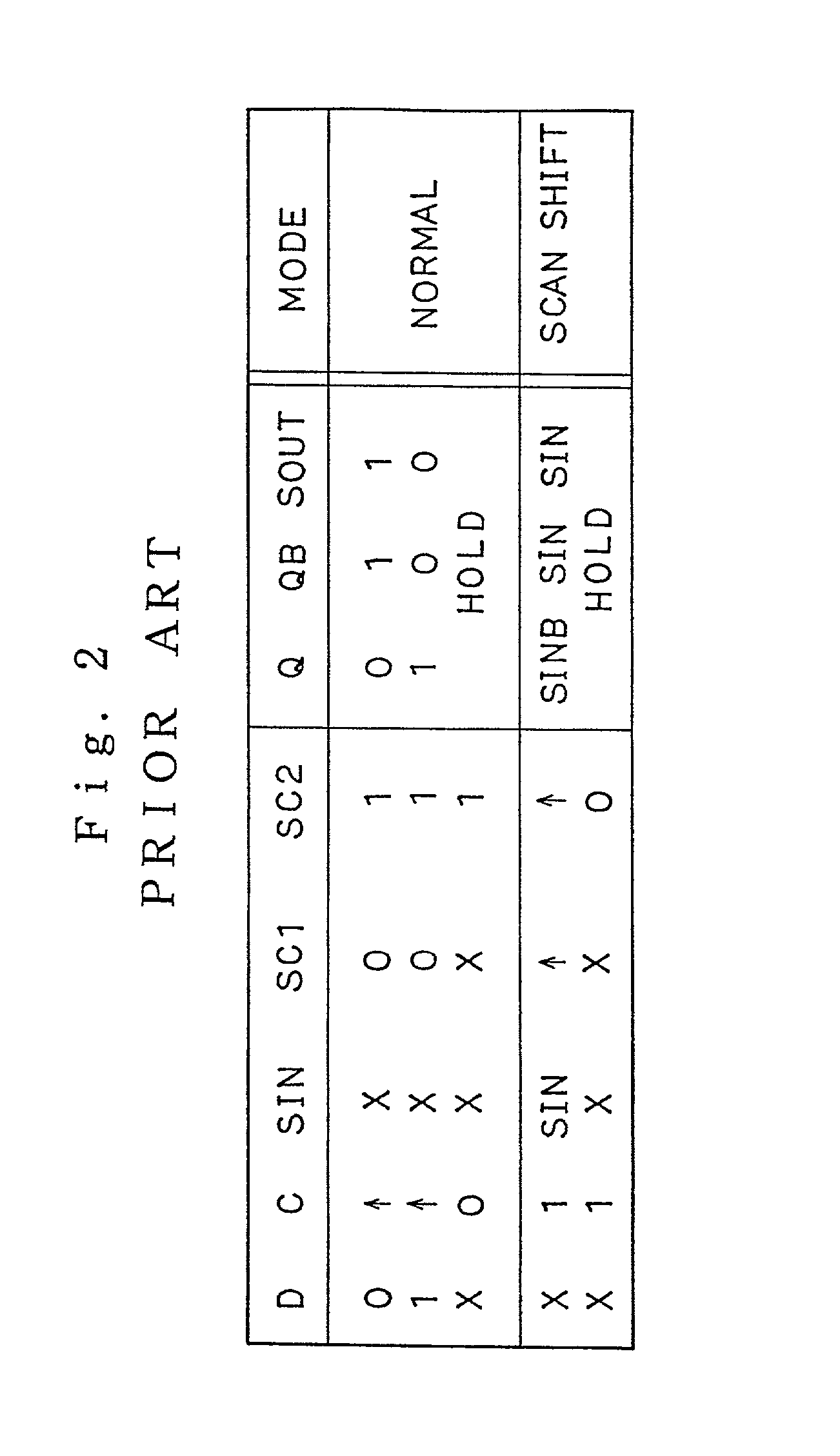Master-slave-type scanning flip-flop circuit for high-speed operation with reduced load capacity of clock controller
a flip-flop circuit and clock controller technology, applied in pulse generators, instruments, pulse techniques, etc., can solve the problems of increased delay time and inability to test, and achieve the effect of suppressing an increase in delay time and speed
- Summary
- Abstract
- Description
- Claims
- Application Information
AI Technical Summary
Benefits of technology
Problems solved by technology
Method used
Image
Examples
Embodiment Construction
[0071]As shown in FIG. 5, a scanning flip-flop circuit according to an embodiment of the present invention comprises master latch 1, slave latch 2, clock controller 3, scan controller 4, scan controller 5, clock controller 6, and scan controller 7.
[0072]Master latch 1 temporarily holds data signal D or scan-in signal SIN. Slave latch 2 temporarily holds an output signal from master latch 1 in synchronism with clock C for normal operation. Clock controller 3 outputs data signal D to master latch 1 in synchronism with clock C. Scan controller 4 outputs scan-in signal SIN to master latch 1 in synchronism with scan clock SC1. Scan controller 5 receives the output signal from master latch 1 and outputs the received signal in synchronism with scan clock SC2. Clock controller 6 receives the output signal from the scan controller 5 and outputs the received signal to slave latch 2 in synchronism with clock C. Scan controller 7 outputs scan-out signal SOT which represents a scan result in syn...
PUM
 Login to View More
Login to View More Abstract
Description
Claims
Application Information
 Login to View More
Login to View More - R&D
- Intellectual Property
- Life Sciences
- Materials
- Tech Scout
- Unparalleled Data Quality
- Higher Quality Content
- 60% Fewer Hallucinations
Browse by: Latest US Patents, China's latest patents, Technical Efficacy Thesaurus, Application Domain, Technology Topic, Popular Technical Reports.
© 2025 PatSnap. All rights reserved.Legal|Privacy policy|Modern Slavery Act Transparency Statement|Sitemap|About US| Contact US: help@patsnap.com



